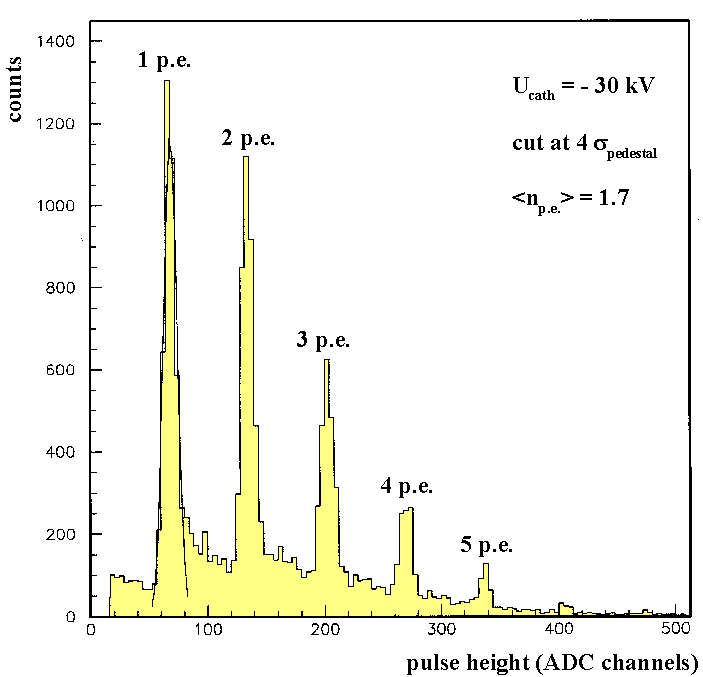In a HPD the electron is accelerated in a strong electric field towards a silicon sensor which represents the anode. The electron is stopped in the depleted silicon, where depeding on its kinetic energy (10 - 20 keV) a large number of electron-hole (e-h) pairs are created. The number of e-h pairs, which is practially identical to the gain of the detector is given by
N = DV / W, with DV
being the potential diffference and W being the energy required to create an e-h pair in silicon (3.6 eV). The actually observed number of e-h pairs will be a bit smaller, since some energy will be lost in the dead layers of the silicon sensor. In a well designed sensor, about 5000 e-h pairs can be detected for a voltage difference of 20 kV.

Measued pulse height spectrum with a HPD
Since the gain is achieved in a single dissipative process, the fluctuations of this number N, i.e. s(N), is determined by Poisson statistics:
s(N) = sqrt(N) or s(N)/N = 1/sqrt(N)
This explains the excellent pulse height resolution shown in the plot above. It allows to clearly distinguish whether the HPD was hit by a single photon or 2, 3 or more photons at a time. To fully exploit this feature, the HPD has to be readout with a low noise electronics, since the width of the peaks is completely dominated by electronics effects.